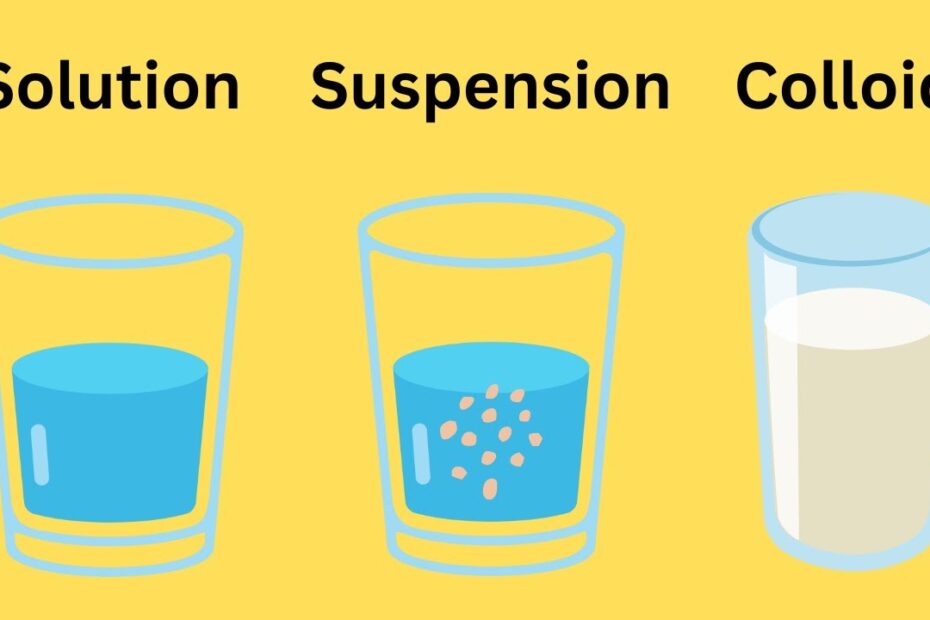What is a simple definition of a colloid?
Alright, let’s break it down without turning it into a science lecture that puts you to sleep. A colloid is basically a mixture where tiny particles of one substance are scattered throughout another substance, but they’re not dissolving like sugar in your coffee. Think of it as the awkward middle child between a solution and a suspension—it’s not fully committed to either. These particles are small enough to stay suspended but big enough to make the mixture look cloudy or milky. So, if you’ve ever wondered why your salad dressing separates or why milk isn’t clear, you’ve got colloids to thank (or blame).
Here’s a quick rundown of what makes a colloid special:
- Particles are tiny but not invisible—they’re between 1 and 1000 nanometers.
- They don’t settle out—unlike sand in water, these particles stay put.
- They scatter light—ever seen a beam of light in fog? That’s colloid magic.
So, whether it’s mayonnaise, jelly, or even whipped cream, colloids are everywhere, making life just a little more interesting (and delicious).
What is an example of colloids?
Ever wondered what makes your morning coffee creamy or your shampoo so lusciously foamy? Enter the world of colloids! A colloid is a mixture where tiny particles of one substance are evenly dispersed in another, and they’re everywhere—yes, even in your kitchen. Think of milk, which is a classic example of a colloid. It’s a mix of fat and protein particles suspended in water, giving it that smooth, creamy texture we all love. Who knew science could be so delicious?
But wait, there’s more! Colloids aren’t just limited to food. Here’s a quick list of other everyday examples:
- Mayonnaise – oil and water playing nice together, thanks to egg yolk as the mediator.
- Fog – tiny water droplets hanging out in the air, making your morning commute a bit more mysterious.
- Gelatin – because who doesn’t love a wobbly dessert that’s basically a colloid party?
From your breakfast table to the weather outside, colloids are the unsung heroes of the everyday world. Science has never been this relatable—or this tasty!
What is a colloid in the thyroid?
So, you’re wondering what a colloid in the thyroid is? Well, it’s not some fancy thyroid-themed cocktail or a new skincare trend. In the thyroid gland, a colloid is essentially the gooey, gel-like substance that hangs out in the follicles—those tiny sacs where the magic happens. This colloid is packed with thyroglobulin, a protein that plays a starring role in making thyroid hormones like T3 and T4. Think of it as the thyroid’s secret sauce for keeping your metabolism in check.
Here’s the fun part: the colloid isn’t just sitting there looking pretty. It’s a bustling hub of activity where iodine gets cozy with thyroglobulin to create those crucial hormones. Without this sticky, protein-rich colloid, your thyroid would be like a chef without ingredients—utterly useless. So, next time someone mentions colloids, you can impress them by saying, “Oh, you mean the thyroid’s hormone factory?”
- Colloid: The gel-like substance in thyroid follicles.
- Thyroglobulin: The protein that’s the MVP of hormone production.
- Iodine: The key ingredient that teams up with thyroglobulin.
Is a toothpaste a colloid?
Ever wondered why your toothpaste doesn’t just slide off your brush like water or clump up like a solid? That’s because toothpaste is a colloid—a fancy science term for a mixture where tiny particles are suspended in another substance. In this case, it’s a mix of solid abrasives (like calcium carbonate) suspended in a liquid base (usually water and glycerin). So, when you squeeze that tube, you’re essentially unleashing a mini science experiment onto your toothbrush. Who knew brushing your teeth could feel so… scholarly?
Here’s the kicker: toothpaste isn’t just any colloid—it’s a gel colloid. This means it has that perfect gooey consistency that’s not too runny and not too stiff. Think of it as the Goldilocks of colloids. And let’s be honest, if toothpaste were a liquid, it’d be a messy disaster, and if it were a solid, you’d probably need a chisel to get it out of the tube. So, next time you’re brushing, take a moment to appreciate the colloidal magic that’s keeping your teeth clean and your bathroom floor toothpaste-free.
Key reasons why toothpaste is a colloid:
- It’s a mixture of solid particles suspended in a liquid.
- It has a gel-like consistency, making it a gel colloid.
- It doesn’t separate into layers, thanks to its stable colloidal nature.
